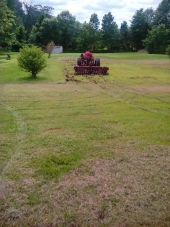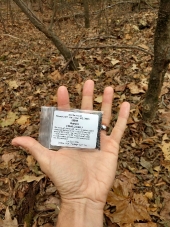posted 4 years ago
I completely missed you replying back to me. It was the watermint that's from Africa that got me.
I'm from northeast Ohio, so I can give you a good list of our Native plants. I'll "*" anything edible:
Pines:
White, Pitch, Shortleaf, Eastern Red Cedar*
Bushes:
Buttonbush, Blackhaw Viburnum*, False Indigo, New Jersey Tea, Eastern Sweetshrub, Sand Cherry*, American Holly, Wild Highbush Blueberry*, Eastern Prickly Gooseberry*, Red Currant* (NOTE: These last two plants are dangerous around pine trees without certain extreme precautions.)
Fruit/ Nut trees:*
Plum (I can't quite remember the species that would be in southern Ohio, but I think it's different than what I would be planting up here), Virginia Persimmon, Pawpaw, Common Hackberry, Black Cherry, Creek Plum, Serviceberry, Butternut, Black Walnut, Beech
Groundcover:
Wild Cranberry*, Trillium, Eastern Skunk Cabbage, American Lovage (Ligusticum Canadense)*, Canadian Honewort*, Bleeding Hearts (Dicentra Eximia), Jack in the Pulpit*, Purple Pitcher Plant (var. Purpurea), Oblong Leaved Sundew, Ramps*, Meadow Garlic*, Hogpeanut*
Vines:
Hops, Maypop*, American Bittersweet, Virginia Creeper, Greenbriar*, Wild Cucumber (hard inedible, sadly), Indian Potato*
Water:
Wapato*, American Lotus*
A lot of what you put up is good, but I'm not 100% on a lot of it. I'd also recommend trees that do well with water, like Black Willow, Kentucky Coffeetree or American Sycamore, though it'll take a while for two of those to get established. I think there's a trick to planting the Coffeetree seeds also. You can't just put they in the ground, you need to scuff them up with a file beforehand, or something.

 3
3








 1
1













 3
3

















